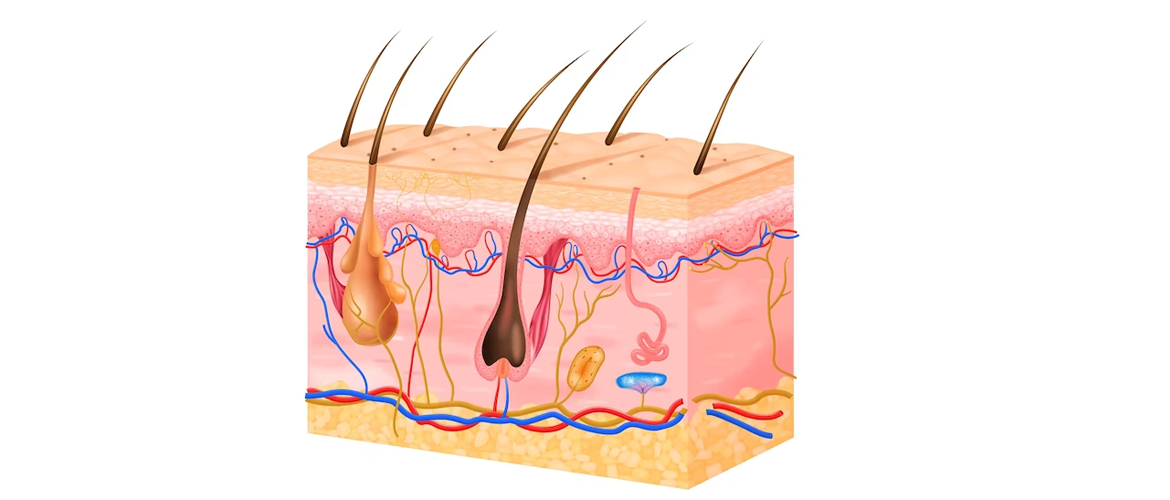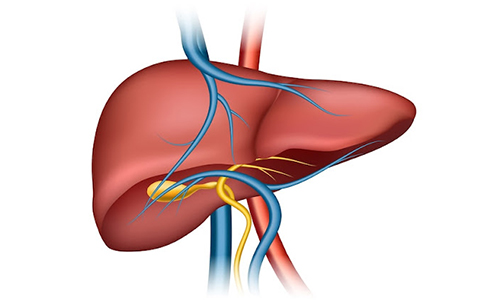
An organ refers to a collection of a group of tissue that serve unique purposes. From pumping blood to disposing of toxins each organ performs crucial life-supporting functions. There are 79 organs in the human body. These organs work in a systemic pattern to keep you alive and active. Well, are you curious to know the largest organ in your body?
Largest Organ in Human Body
The skin is the largest organ in the human body. It is an external organ with a fleshy layer covered with glands, nerves, hair and nail. It covers the whole body and works as a protective shield controlling the internal and external environment. The human skin is 2 millimetres thick and weighs up to 10895.10 grams. The skin comprises about 16% of the overall human body weight. Skin is the predominant sense organ that can sense touch, pain, pleasure, heat and cold.
Primary Functions of Skin
- Restrain water loss
- Protect the body from external factors such as UV rays, pollution, germs, and more
- Receive the sensory information
- Preserve water, fat and vitamin D
- Balance the body temperature
- Observe vitamin D in sun exposure
Which is the Largest Internal Organ?

Which is the Largest Internal Organ
The liver is considered the largest solid internal organ. It is positioned in the upper right part of the abdomen below the rib cage and the lungs. It weighs around 3 to 3.5 pounds or 1.36 to 1.59 kilograms. The human liver have been performing 500 different functions. Additionally, it acts as the body’s filtration system.
What is the largest organ in the human body?
- A. Eye
- B. Skin
- C. Kidney
- D. Brain
The major functions of the liver
- Purifying the blood,
- Producing the protein from blood plasma,
- Storing excess glucose in the form of glycogen
- stimulating enzymes, and storing vitamins, minerals, and glycogen.
What are the other largest parts of the human body?
The organ size varies according to the development of the human body.
Brain

What are the other largest parts of the human body
The brain is one of the essential organs in the human body. It receives and decodes the information, interprets the sensation, and commands the actions. The human brain weighs up to 3 pounds or 1.36 kilograms.
Lungs
On the basis of the storage capacity, the lungs are also considered the largest organ of the body.
An average human lung is capable of holding 4 to 6 litres of air. The human lungs weigh 2.2 pounds or 1 kilogram.
Heart

What are the other largest parts of the human body
The heart is the biggest organ in human body followed by the lungs. It is located between the lungs. An average human heart is 4.7 inches or 12 centimetres long, and 3.3 or 8.5 centimetres wide.
Kidney
The kidney is located at the bottom of the ribcage on either side of the spine. It is about 4 to 4.7 inches long. Each kidney contains about 1 million filtering units and filters about 200 quarts of fluid per day.
Interstitium

What are the other largest parts of the human body?
About a seventh of your body is filled with fluids. For example, lymph nodes, lymph vessels, the heart, and blood vessels contain fluids. The rest of the fluids in the body are called interstitial fluids. These fluid-filled spaces are made up of connective tissues and are commonly found beneath the skin, in the fascia, urinary system, veins and arteries, and in the lungs and digestive tract.
Interestingly, the interstitium may have a role to play in conditions like cancer and inflammatory diseases, but it is still debatable whether it can be called an organ. If the medical community decides, it could become the body’s primary and largest organ. Until then, we will conclude that the skin is the largest organ.